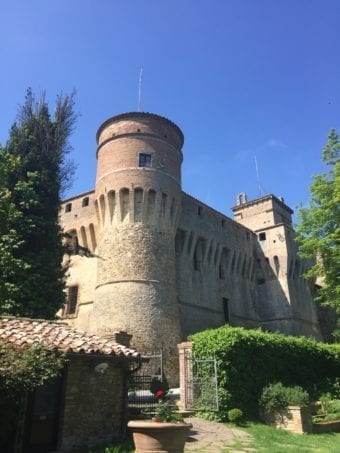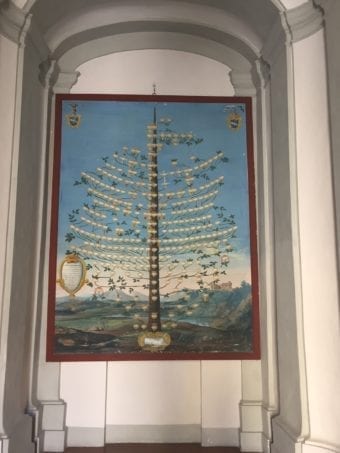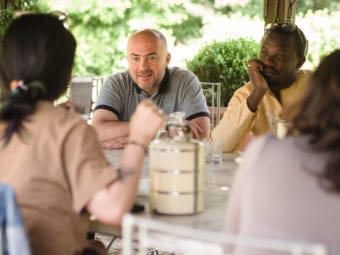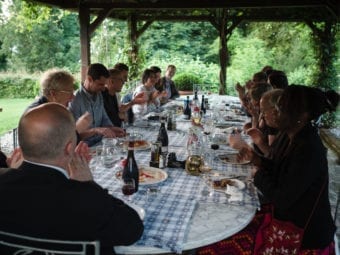
I arrived in Civitella with a mixture of enthusiasm and hesitation. Waiting for me there was a medieval castle built by a condottiere with a curious name (Cane Ranieri: it was derogatory, but he ended up using it as his real name) and made alive by a legendary founder. A polyglot and relative of the Ranieri family, Ursula Corning (1903-2002) had rented the castle on a permanent basis at the beginning of the 1960s, turning it into a meeting point for her circle of friends. Before her death, she wanted Civitella to become a residence that would host writers, composers and artists from all over the world. In a word, the dream: American efficiency immersed in the ochre and green of the Umbrian landscape.
But who can assure me that Heaven is livable in everyday life? Too many times I had heard friends complaining about the impossibility of building decent relationships during residences, a preoccupation shared by Italo Calvino, who wrote: “wouldn’t all this efficiency steal our soul?”, commenting on writing grants received during his American sojourn.
Nonetheless, I embarked on this journey. Landing at Fiumicino, I immediately became acquainted with Halldór, an Icelandic composer whose warmth contradicts the stereotypes on “Nordic-ness”. The conversation with him, Bert and Lynn (respectively, an artist from the US and a writer from South Africa) smoothly swung from New York to academia, from the old masters to residences.
“Nice mates!”, I mentally exulted. Drinking Chinotto we waited for Liang, our last traveling companion, who was arriving from Shanghai. Then, two hours by car from the airport and we were projected into another space. Civitella lies on the Umbrian hills, not far from where Piero gave birth to his masterpieces. It hovers, seemingly isolated, in the countryside, as clouds that often foreshadow imaginary castles. In fact, Umbertide, the Italian municipality to which it belongs, is just ten kilometers away; you can reach the town either by car, or by following a path dotted by clumps of wild flowers and rosehips. The impact of the castle is astounding; every corner hides a story, the voices of which do not frighten us (if every castle has its own ghosts, those of Civitella seem friendly and harmless!).

Diego Mencaroni and Ilaria Locchi, the efficient Program Coordinator and Program Assistant of the residency, gave us a tour of the castle. As they illustrated the Ranieri family tree, my eyes dwelled on what I believed to be its reproduction on a smaller scale. I found out that it was not, but rather that I was admiring a fellow’s work. “Often, artists,” Diego explained, “donate to Civitella works born in dialogue with the structure of the castle and its gardens.” I soon learned that every detail is the result of an harmonious dialogue between nature and creativity in all its forms: desserts and spirits are made out of the castle’s fruit trees, while the fresh bouquets in our rooms come from the “secret garden”, my favorite place at Civitella.
Diego and Ilaria walked us through our apartments. The names reflect the castle’s history (Granary, Vault, Lemon House: in the Middle Ages Civitella was a kind of independent village) as well as typical Italian eccentricity. Liang and I will live in Castrabecco, one of the few apartments outside the walls. Separating it from the central complex is a long avenue flanked by cypresses, accessed through a gate. While discovering the existence of a manual lock we continued to prefer the incredibly slow, automatic one: doors to another world seem to be opened.
We share the kitchen and the living area of the apartment, a former stone farmhouse with trussed ceilings. I usually work in the large, bright studio that has been made available to me. Perched outside the windows, goldfinches and a barn owl watch me taking notes; I smile, over time I get used to their presence. Other times I like to join Liang in her studio, a former tobacco dryer right in front of our house. With spring coming, we both work outside: she captures videos, I work on my manuscript under the ivy-embroidered pergola.
Life never gets boring at Civitella: what makes it different from other residences is the balance between time spent working and social activities. The group of fellows and director’s guests gathers at dinner, while lunch is served in containers inspired by those of workers: you can either eat outside, or take it into your studio [photo 4]. The absence of constraints made being together even more enjoyable: my group and I usually had lunch in the veranda, while our evenings alternated chats, cocktails, and epic challenges in the games room [photo 5].


With Liang we almost always walk back together along the road that takes us to Castrabecco. We often stop along the way observing flowers or plants we had not noticed before; once a deer made an unexpected appearance. I smile while she stops and stares at the clouds. “I am a fisher of images,” she says; I don’t think she could have found a better description of her work.
It’s time to pack up. I look at my desk: it’s full of finished work, drawings by artist friends, and new collaboration projects. I silently thank Civitella, human residence.

